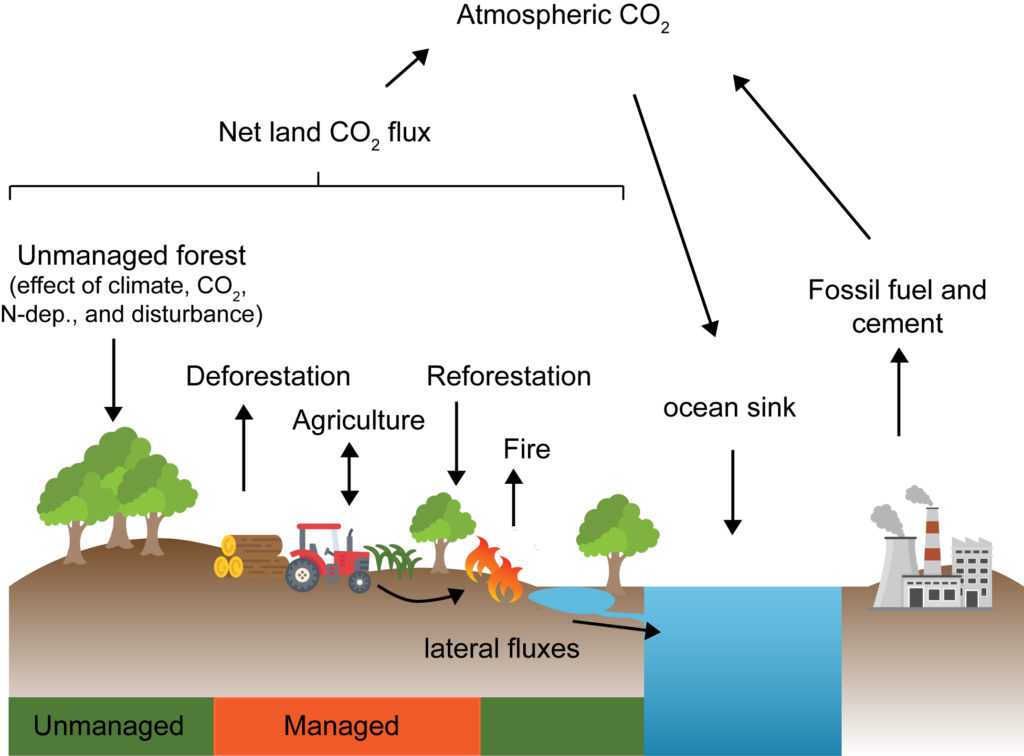Land-use emissions and removals
Management of land-use, land-use change and forestry (LULUCF) represents about 25% of the emissions reductions pledged by countries in the Paris Agreement. However, LULUCF emissions and removals of CO2 have large uncertainties due to their reliance on sparse observations, as well as due to the lack of accounting for natural effects.
National inventories report fluxes only on managed land, which is a proxy for the anthropogenic emissions and removals. They do not separate natural effects, which can influence emissions and removals in managed land, nor for indirect human effects, which can influence emissions and removals in unmanaged land.
EYE-CLIMA will improve LULUCF estimates using approaches based on observations with wide temporal and spatial coverage, namely new satellite remote sensing of the land biosphere and atmospheric CO2 mixing ratios. The EYE-CLIMA approach is to use satellite data products of above ground biomass with machine learning to estimate CO2 fluxes from forests, and, in parallel, atmospheric inversions for land-biosphere CO2 fluxes, which will be corrected for lateral carbon fluxes to deduce changes in carbon stock. Since these estimates will be for the total of direct and indirect human influence as well as natural processes, the estimates for managed land will be conceptually comparable to what national inventories report.

